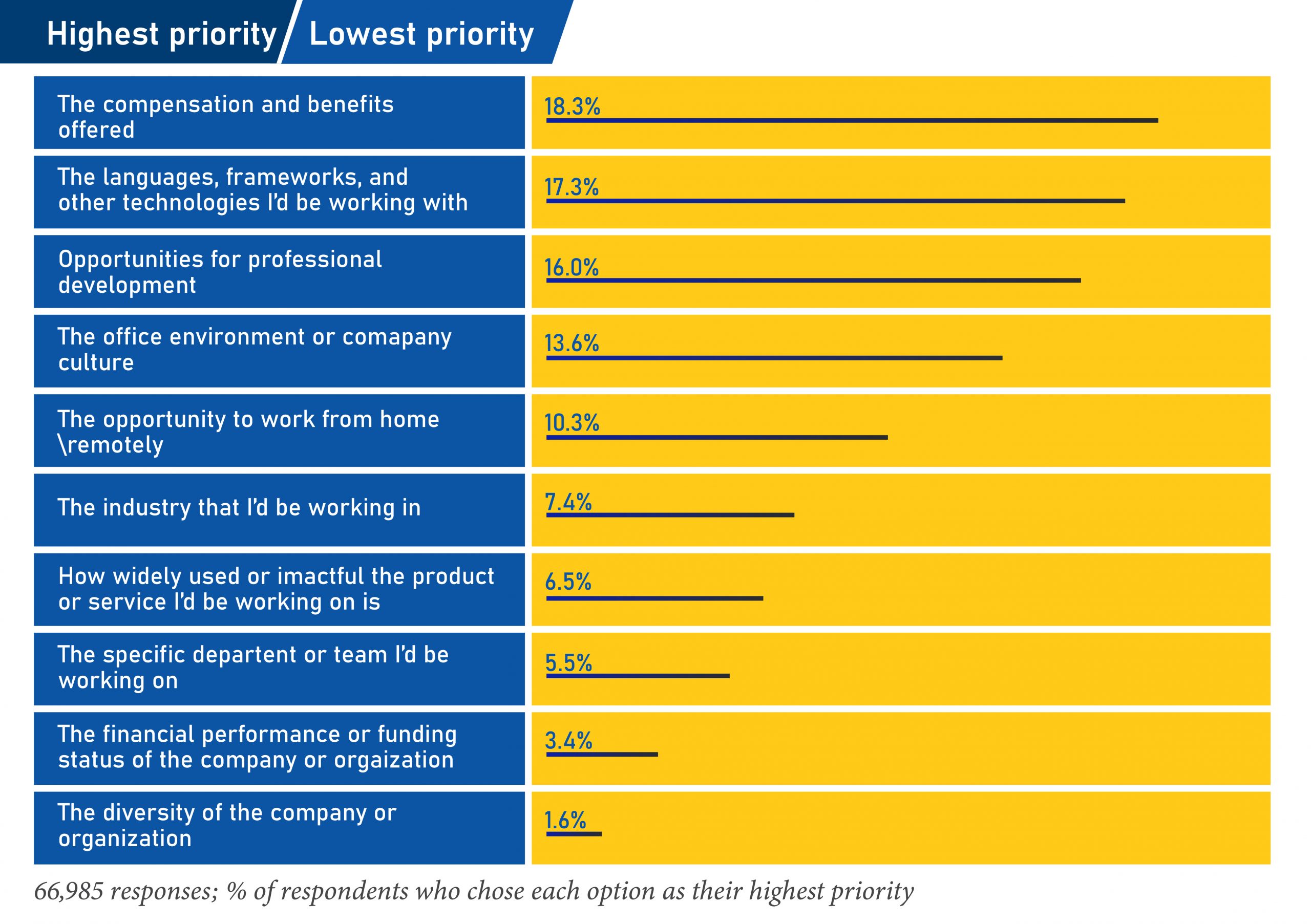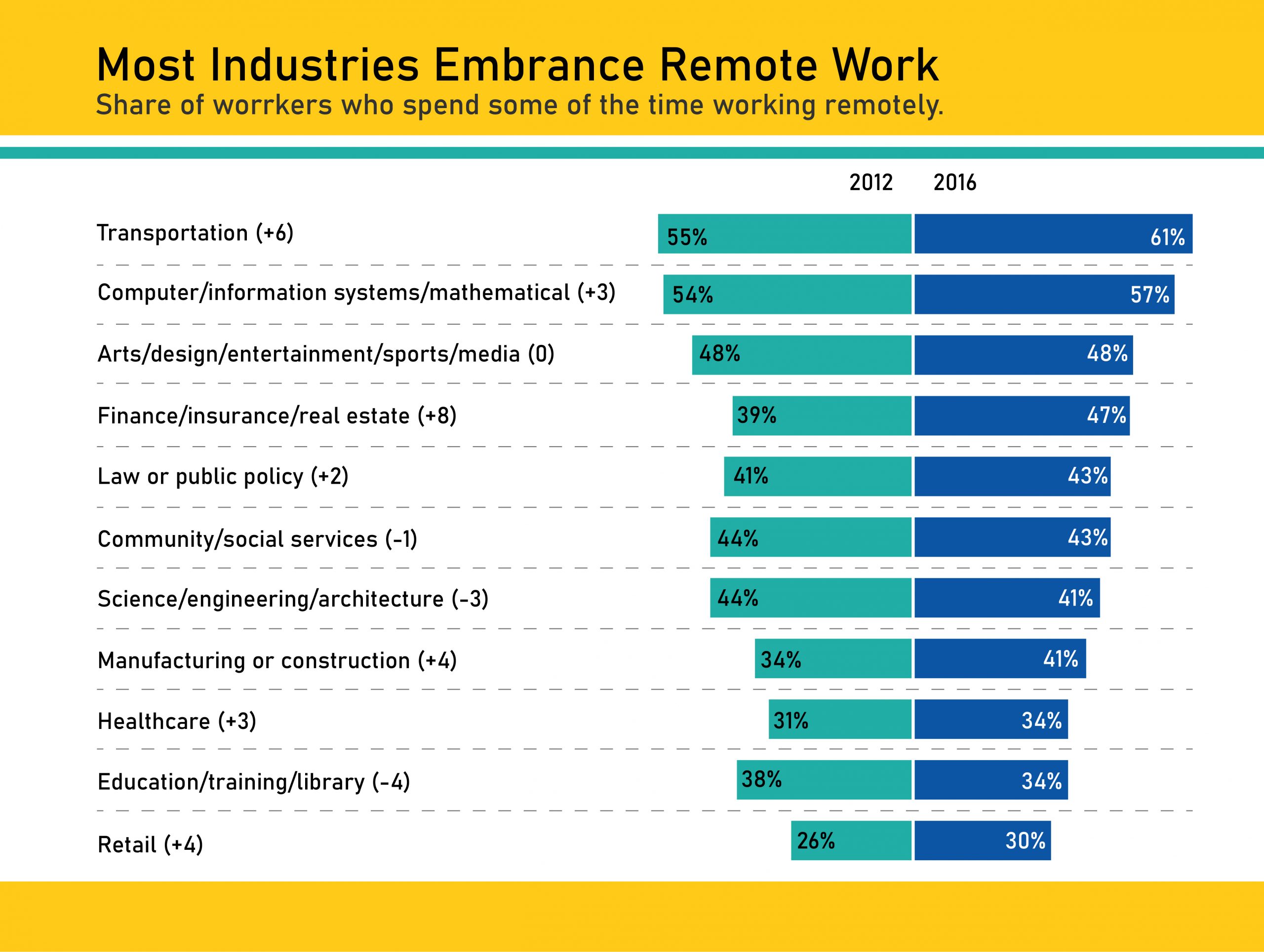Table of content
As the global scenario and working methodologies are evolving, there are an increasing number of companies that are transitioning their work as a remote team. As a matter of fact, collaborating through virtual workspace is not new for millions of independent and skilled professionals. However, building remote teams is now growing rapidly as technology makes it easier, and now more people prefer flexibility in their work. But, despite this increasing acceptance, there are a lot of myths about building remote teams. Thus, we are going to debunk common myths in this blog to boost remote team building.
Before that, let’s check out some statistics about the growing trend of remote working or building remote teams.
Remote working is on the rise; about 52% of the global workforce currently works remotely at least once a week. In the near future, it is expected to rise and thus, remote working or building remote teams will become a new normal.
According to the Stack Overflow Developer Survey 2018, about 10.3% developers’ remote working option is on highest priority.
Slowly and steadily, a number of industries are embracing remote working. This becomes evident with the below graph presenting the shifting focus of industries towards building remote teams working on their convenience.
Many companies are adopting remote working because of the available flexibility and mobility. This ease of working is the major responsible factor that attracts talented individuals who seek something different from any typical office job.
Not owning a physical office space doesn’t mean you cannot be successful as a team and as a company. Rather, debunk common myths and you need;
- A predefined set of rules to build a remote-friendly environment,
- New Remote hires must have the skill set necessary to work remotely.
There are multiple myths about remote work, so to help you set the foundation for how it can actually look like, we decided to debunk common myths about building remote teams to work. We try to put in words our best practices and tips we learned by being a remote working in a period of time. Here are the top 7 myths that needed to be debunked first and foremost to promote agencies for building remote teams.
Myth #1- Building Remote Teams Means Decreased Productivity
It is common thinking that anyone working remotely is more distracted because they don’t have anyone to push them to work or keep tabs on their progress and make them finish the task by the clock. But, now debunk common myths based on a study by Harvard Business Review proves, on the contrary, some companies notice the employees productivity increases by 13.5% after allowing remote working.
Likewise, the Stanford Study also found remote working facilities lead to a 13% increase in employee performance and going more result-oriented. However, the fact is, healthy remote companies or building remote teams solely rely on trust between the employee and the employer. Along with a supportive remote working environment.
Based on Supersourcing remote working experience, we ensure to get in contact through Slack, Google Meets, and Basecamp. We tried to minimize the distance or let people be left alone while maintaining the virtual communications. We believe that trusting and giving an optimal work environment will allow even an ordinary employee to propose an idea that can shape the company’s future. That’s why we have rapidly grown our remote working team and deliver productive and quality work every day.
Myth #2- Remote Teams Suffer Poor Communication
Communication is one of the major factors that make employees think twice about remote working. It is also one of the common myths about building remote teams. Apart from that, remote working employees might also feel lonely at their homes and result in peer disconnection.
Without communication, it becomes challenging to carry out work remotely. To carry out work smoothly, it requires a certain set of tools and rules to follow. Let’s debunk common myths about building remote teams by implementing proper strategies and thorough planning.
Without a doubt, it is easy to make your people feel left out due to a lack of communication with other employees. Therefore, to avoid this situation in Supersourcing, we use Slack, and Google Meet for verbal communication. Apart from that, there are various tools that you can use to connect and communicate frequently with your team members;
- TeamSpeak– central communication hub and voice communication
- Slack– central communication and written and verbal communication
- Trello & Jira– for Agile Project Management
- Basecamp– for assigning task and deadlines
- Google Meet, Skype, Zoom, Hangout– for video conferencing with clients and team
- Git– for a flexible source control system
- GitHub, Stash– for code reviews
Myth #3- No Work-Life Balance- Remote Work is for 24/7
Remote work is for 24/7- one of the most common myths about building remote teams among one and all that needs to be debunked while working remotely. Just because an employee does not physically arrive and leave the office premises each day does not mean that their work stretches continuously endlessly. Due to this misconception, many people prefer not to work remotely.
In contrast to that, building remote teams is a good option along, as it builds trust among employees and management. People who work with remote teams work similar hours to everyone else. Thus, they don’t have to put extra effort or time to prove that they are getting things done.
Remote working requires discipline and planning to organize daily working schedules of office and home to carry out and balance both places together while being at home only. Apart from that, Remote working is like a luxury for working parents to watch their children grow and witness their every small and big achievement personally.
Myth #4- Home Offices are not a Healthy Work Space
Home Offices will only be an unhealthy workspace if you don’t organize things in your way. Firstly, require a separate room and workstation to make remote working a healthy workspace. It will help you have a mind-frame to do official work while being at your home and do things without disturbance.
Let me mention a few points how our colleagues try to set their home office and depict a healthy workspace.
- good lighting,
- comfortable chair and desk (workstation), and
- separation from outside work distractions.
Organizing your workspace the way you want it will be a great perk that pays off in the long run. When working remotely, it’s worth it to take care of the necessary equipment and tools. An additional monitor, headphones, and the most important — access to a good Internet connection.
Myth #5- Building Remote Teams Limits Training Opportunities
Well, it is quite a logical concern, especially for the new joiners and the freshers in the industry. Because, if employees are not physically present in the office then it would be difficult to train them. Apart from that, if the employee is not regularly trained then their performance might suffer. This ultimately affects the growth of the company as well.
These concerns are quite genuine and require proper attention for any company while building remote teams. Once again, technology comes to the rescue. It is quite easy and very cost-effective to train team members digitally. Online courses, written documents, video chats, screen shares, and similar means are popular educational tools.
Apart from that, personal assistance and training can also be provided through video teaching. It becomes possible with the availability of various group calling applications that support smartphone and desktop users. Once a lesson has been taught and recorded, it can then be shared with future remote employees. It saves companies time and resources.
Myth #6- Data is Unsafe in Remote Working
Many companies and even small agencies worry about transferring data and information to computers outside the organization. Sharing details at unsecure servers also leads to a breach of confidentiality. Well, debunk common myths, and this is another myth that hampers remote teams working and demotivates organizations at the initial level too.
There are a number of secured tools and sources that can be used by IT agencies everywhere while building remote teams. Putting employees at cloud-based applications means the security is outsourced to that respective software program. The IT teams can handle and manage version controls without requiring access to an employee’s physical machine.
However, many organizations consider this working method could result in stealing information while working regardless of their work location. Well, it is mainly an issue with remote employees or people problems, not the location or remote working problems.
Our Supersourcing team is maximally working remotely; we as a team debunk this common myth that data is unsafe. We are using different tools to communicate and deliver work progress. However, all our work and data are safe and secure while working with remote teams.
Myth #7- Remote Working Hampers Learning from Co-Workers
Learning is important for every employee’s individual and overall an organization’s growth. But somehow, in remote working, this learning gets affected. But it can also be overcome with proper planning and strict implementation.
So, we at Supersourcing consider it also a myth because learning is a continuous process, and people can easily find different learning sources. It can be from co-workers or through the internet or getting virtually connected with them. This allows effective communication and allows to easily complete the project along with client’s satisfaction.
We conduct R&D and get the whole team connected once in a month regularly, so people don’t feel lonely or neglected. Here, they learn some common valuable things to enhance their skills. Apart from that, ensure to be connected multiple times in a month. Share their learnings with each other and deliver the best solution considering clients requirements.
The Truth About Building Remote Teams or Remote Working
After explaining the points mentioned above to debunk common myths about building remote teams- represents remote working is quite a wonderful arrangement. Building remote teams enhances flexibility and is the best working option for a great number of people and the businesses they are employed by.
However, studies show that those who regularly work remotely or outside the company offices are generally more productive. A good contributor in the team, and are more happier and satisfied with their work than their colleagues. After this, whenever someone tries to convince you that remote working is not an effective working arrangement- feel free to refer to this blog and help them to debunk common myths about building remote teams.
First, start working remotely with appropriate technologies, strategies and tools. Implementing it appropriately will definitely make your current lifestyle possible. Without the right tech tools, you wouldn’t be able to stay in touch with your team from the comfort of your own home office or local coffee shop.
Supersourcing is a remote working outsourcing company that helps agencies to scale their business. We promote remote working and help agencies to get projects and deliver the best services to clients while using tools and techs appropriately. The proper use of tools makes this possible for all the registered agencies and clients. Apart from that, our Supersourcing team is supporting these agencies to debunk common myths about building remote teams and be what you are and do good in your expertise domain.









